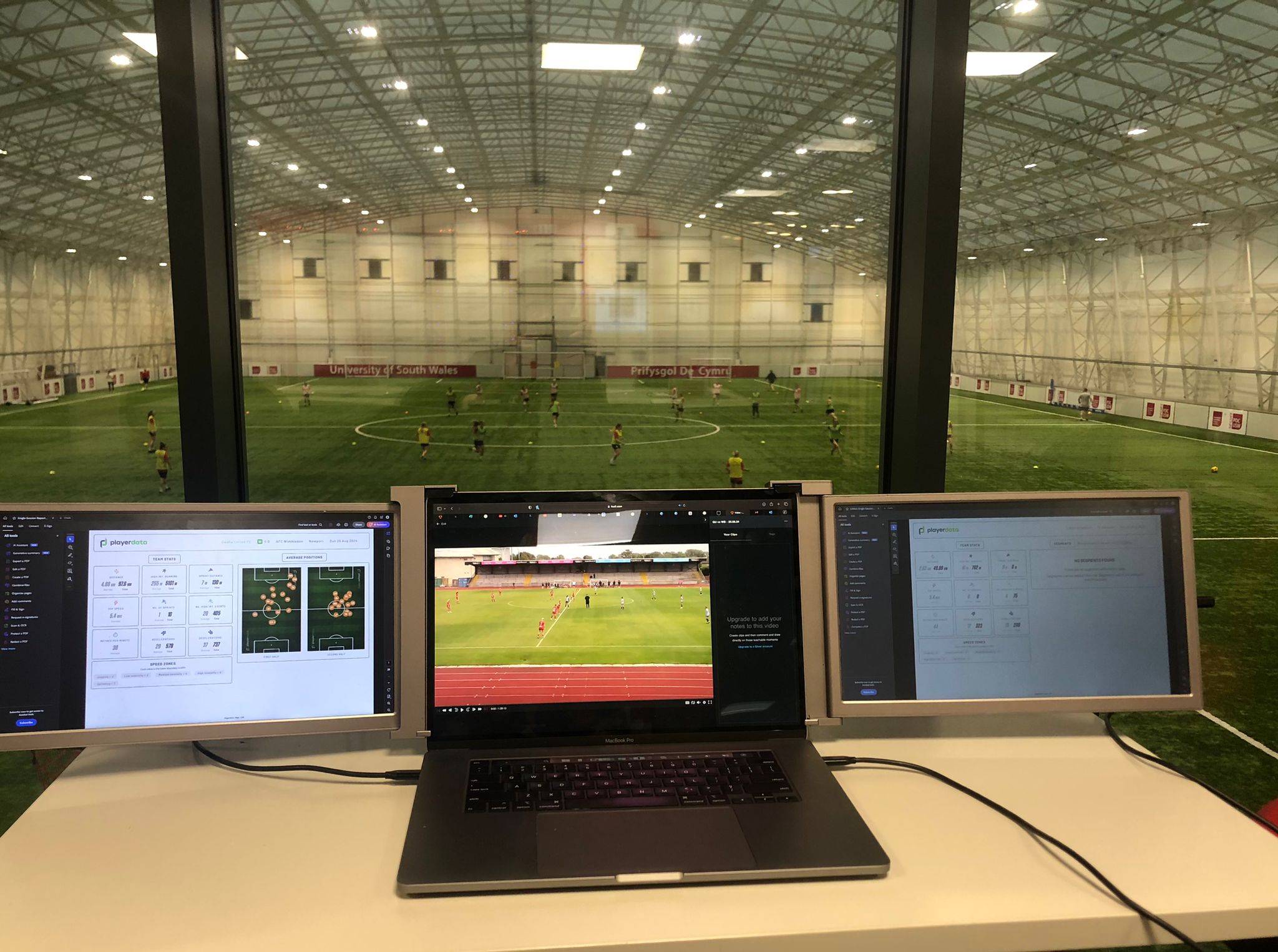Women’s football has been on the rise globally, with increased visibility and interest over the past decade. Despite this growth, a significant issue continues to hinder its full potential: the lack of comprehensive data for analysis. This gap in data not only limits the ability to analyse performance but also affects decision-making, scouting, and the overall development of the game. The scarcity of filmed games, the inaccessibility of existing footage, and the absence of detailed temporal data are all factors contributing to this problem.
The Challenge: Lack of Data and Filming in Women’s Football
One of the most pressing issues in women’s football is the insufficient recording and accessibility of match footage. Many games, especially at lower levels, are not filmed at all. This lack of coverage makes it impossible to collect data for analysis, which is crucial for understanding and improving performance. Even when games are filmed, the footage is often not made available for analysis, either due to rights issues or because the quality is too poor to be useful.
Moreover, the data that is available is often incomplete or inconsistent. For example, while men’s football benefits from comprehensive tracking and advanced metrics such as expected goals (xG) as a common example, women’s football lacks similar depth. This discrepancy creates a significant challenge for analysts trying to apply the same methodologies to women’s games. The data that is collected for men’s football doesn’t always translate directly to the women’s game due to differences in style, pace, and tactics, which means that gender-specific models are needed.
The StatsBomb Initiative: Pioneering Gender-Specific Research
Recognising these challenges, StatsBomb has taken significant steps to address the lack of data in women’s football. Their approach involves creating gender-blind research and developing datasets that can be applied specifically to the women’s game. StatsBomb has introduced initiatives aimed at collecting and analysing data from women’s football to help bridge the gap between the men’s and women’s games.

For instance, StatsBomb has worked on developing new metrics tailored for women’s football, acknowledging that the models used in men’s football might not be directly applicable. This effort includes the creation of bespoke xG models for women’s football, which account for differences in player movement, game dynamics, and shooting patterns. These initiatives are crucial in providing a more accurate analysis of the women’s game and ensuring that decisions made by clubs and coaches are based on relevant data (StatsBomb | Data Champions) (StatsBomb | Data Champions).
The View from the Inside: Matthew Jenckincoshcki’s Perspective
Matthew Jenckincoshcki, a respected consultant who has worked with the analytics departments of top clubs like FC Barcelona Femení and Liverpool Women FC, offers a sobering view of the current state of data in women’s football.
According to Jenckincoshcki, one of the major issues is the lack of major studies and research dedicated to the women’s game. He explains that many organisations, due to the paucity of women-specific data, are forced to base their research on data from men’s top-flight leagues. This approach, however, overlooks the gender-specific nuances that are crucial for accurate analysis in women’s football.
“One of the biggest challenges we face is the reliance on data models built for men’s football.”
“These models do not account for the gender biases inherent in the sport. The pace, physicality, and even the tactical approaches can be very different, and using men’s data as a baseline for women’s football can lead to inaccurate conclusions. This lack of tailored research is holding back the development of the women’s game at the highest level.”
Dylan Carpenter’s Experience: Creating Custom Data Sets
Dylan Carpenter, the Director of Data Analysis firm Scout Edge Analytics Ltd, has experienced these challenges first-hand while working on projects related to women’s football. He has had to create custom data sets and adapt existing models to make them relevant to the women’s game.
“We’ve had to essentially start from scratch in some cases.” Carpenter explains.
“The lack of data meant that we couldn’t rely on existing models like xG. Instead, we had to replicate and alter these models, tailoring them to account for the differences in how women play the game.”
Carpenter’s work highlights the innovative approaches needed to overcome the data deficit in women’s football. By creating new datasets and models, analysts like him are pioneering methods that could become standard practice as more data becomes available. However, he notes that this work is time-consuming and resource-intensive, underlining the need for greater investment in data collection and analysis for the women’s game.
The Importance of Gender-Blind Research
StatsBomb’s gender-blind research is a critical step toward addressing these issues. By not assuming that data models for men’s football can simply be applied to women’s football, StatsBomb is paving the way for more accurate and meaningful analysis. This approach also emphasises the need for more extensive data collection in women’s football, including filming all games, making footage accessible, and developing comprehensive temporal data.
Gender-blind research also calls for the development of new metrics that better reflect the realities of women’s football. For example, a study by StatsBomb found that women’s teams tend to play with different formations and styles compared to men’s teams, which affects everything from passing networks to defensive strategies (StatsBomb | Data Champions). These findings underscore the importance of developing tailored analytics that can provide insights specific to the women’s game.

Moving Forward: The Need for Comprehensive Data in Women’s Football
The path forward is clear: there needs to be a concerted effort to film more women’s games, make this footage accessible, and develop robust data sets that reflect the nuances of the women’s game. This will require investment from governing bodies, clubs, and private companies alike. The work of organisations like StatsBomb, along with the pioneering efforts of individuals like Dylan Carpenter and Matthew Jenckincoshcki, demonstrates that it is possible to bridge the data gap in women’s football.
However, this is just the beginning. For women’s football to reach its full potential, the industry must prioritise the collection and analysis of data, recognising that the women’s game is not just an extension of the men’s game but a distinct entity with its own characteristics and needs.
In conclusion, while the challenges are significant, the commitment of analysts, researchers, and companies to developing gender-specific data is paving the way for a brighter future in women’s football. As more data becomes available, the ability to analyse and improve the game will only increase, helping to elevate women’s football to new heights. The work being done today lays the foundation for a more equitable and informed approach to football analytics, one that recognises and celebrates the unique qualities of the women’s game.
Data analysis has become an indispensable tool in modern football, transforming the way clubs scout players, develop talent, make strategic decisions, and foster the growth of the game. The integration of data-driven insights has not only enhanced the competitive edge of teams but also contributed to a more scientific and objective approach to football management.
In scouting, data analysis is crucial for identifying potential talent that might otherwise go unnoticed. Traditional scouting methods relied heavily on subjective assessments, but modern data analysis allows clubs to evaluate players based on a wide array of metrics. These include physical attributes, technical skills, and in-game performance data such as pass accuracy, defensive contributions, and goal-scoring efficiency.
By using advanced metrics like expected goals (xG), expected assists (xA), and player heat maps, scouts can gain a deeper understanding of a player’s potential impact on the team. This objective evaluation helps clubs make more informed decisions when recruiting new players, reducing the risk of costly transfer mistakes and ensuring that the players they sign are well-suited to their tactical needs.
Development: Tailoring Training to Individual Needs
For player development, data analysis enables coaches to tailor training programs to the specific needs of each player. By monitoring metrics such as sprint speed, stamina, and workload, coaches can identify areas where a player may need to improve and customize their training regimen accordingly. This individualised approach not only accelerates player development but also helps prevent injuries by managing workload and ensuring players are not overworked.
Furthermore, data analysis can track a player’s progress over time, providing clear indicators of improvement or areas that need further attention. This continuous feedback loop ensures that development strategies are effective and aligned with the club’s long-term goals.
Decision-Making: Enhancing Strategic and Tactical Decisions
In terms of decision-making, data analysis provides coaches and managers with the insights they need to make informed tactical decisions. During matches, real-time data can inform decisions such as substitutions, formation changes, and tactical adjustments. For example, if data shows that the opposing team is vulnerable on the flanks, a coach might decide to exploit that weakness by focusing attacks down the wings.
Off the pitch, data analysis aids in strategic decision-making, such as determining which areas of the squad need strengthening during transfer windows or which players should be offered new contracts based on their performance data. This data-driven approach ensures that decisions are not based solely on intuition or past experiences but are supported by empirical evidence.
Growth of the Game: Elevating Standards Across All Levels
Finally, data analysis contributes significantly to the overall growth of football. At the professional level, it elevates the standard of play by enabling teams to optimise their performance. As clubs and national teams continue to adopt data-driven approaches, the quality of football increases, making the game more competitive and entertaining for fans.
At the grassroots level, the availability of data analysis tools helps aspiring players and coaches to adopt professional practices early on. This democratisation of data fosters talent development across all levels of the sport, ensuring a steady pipeline of skilled players who are ready to compete at the highest levels.
In conclusion, data analysis is not just a tool but a cornerstone of modern football. It enhances scouting precision, accelerates player development, informs strategic decisions, and supports the growth of the game at every level. As the football world continues to embrace data, the sport will continue to evolve, becoming more competitive, inclusive, and engaging for everyone involved.
References:
https://www.alamy.com/stock-photo/wales-women.html?sortBy=relevant



